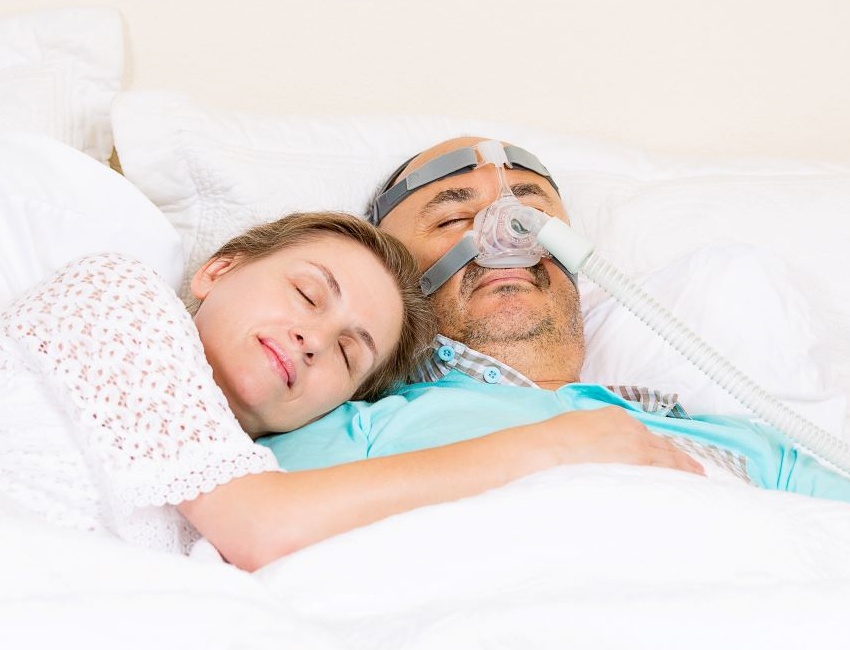How dangerous is sleep Apnea?

How dangerous is sleep Apnea?
What is sleep apnea?
Sleep-disordered breathing (SDB) is a classification of sleep abnormalities that includes Obstructive Sleep Apnea (OSA), Central Sleep Apnea (CSA) and snoring. OSA is characterized by repeated episodes, while asleep, of events including apneas (complete airway obstruction lasting at least 10 seconds), and hypopneas (partial airway obstruction lasting at least 10 seconds).
These disturbances result in recurring arousals from sleep, activation of the fight or flight response in the central nervous system, and in some cases, hypoxemia or a severe drop in blood oxygen levels. Depending upon varying definitions, the minimum significant frequency of these events may be 5-15 times per hour, and may be observed to occur up to 100 times per hour or more.
By far the most common type of SDB is OSA, where mechanical obstruction of the airway occurs due to sleep-related loss of upper airway dilator muscle tone. It is often associated with common physical characteristics such as obesity, a large overbite (retrognathia), and extra tissue crowding the back of the throat. OSA can also be influenced by physiological traits such as unstable breathing control arising within the brain. CSA, less frequently seen, is caused by these abnormalities in the control of breathing, with episodes of under-breathing leading to arousals from sleep. CSA is most common in individuals with cerebrovascular or cardiovascular disease, and in individuals treated with narcotics. Although OSA and CSA are caused by different processes, they often occur together.
What are the dangers of sleep apnea?
Many studies show that SDB can have major short- and long-term impacts, both functionally and physiologically. When sleep is interrupted with SDB, drowsiness occurs during the waking hours. People with SDB have twice the risk for car crashes, are 25% more likely to have occupational accidents and exhibit substantial loss of work efficiency. SDB may also lead to serious health issues, such as significantly increased chances of stroke, heart arrhythmias, chronic hypertension, heart failure, and dementia. According to the National Commission on Sleep Disorders Research, roughly 38,000 cardiovascular deaths annually in the United States are in some way related to SDB. SDB and disruptive snoring have also been found to produce health issues in sleep partners.
How many people have sleep apnea? What is the cost to the economy?
It is speculated that up to 80-90% of SDB is currently undiagnosed in the United States, and in many cases not identified until after a major event, often serious or even fatal, has occurred. Estimates of the prevalence of OSA vary widely, but the most recent studies suggest that 20% or more of the adults in the United States suffer from OSA, more commonly males than females. One billion people are estimated to have OSA worldwide. The cost of care of individuals with untreated OSA is substantially higher than those without. The annual economic impact of SDB in the United States alone is estimated to be as much as $150 billion annually.
What should I do if I think I have sleep apnea?
Once SDB is suspected, testing must be performed to establish the presence of the condition and to assess its severity. Most diagnostic testing currently utilizes home testing equipment, which is readily accessible, sufficiently accurate, and relatively inexpensive. In some circumstances, diagnostic testing is best performed under observation in a sleep laboratory. If the diagnosis is positive, it is extremely important that you take steps to reduce the symptoms. The options are discussed in another blog on this web-site. You might consider breath training initially using the breathesimple app. Whatever treatment you use, improving your breathing behavior is an important first step.
Further reading:
Mulgrew A T, Nasvadi G, Butt A, et al. Risk and severity of motor vehicle crashes in patients with obstructive sleep apnea/hypopnea. Thorax. 2008; 63:536-541.
Accattoli M P, Muzi G, dell'Omo M, Mazzoli M, Genovese V, Palumbo G, Abbritti G. Occupational accidents, work performance and obstructive sleep apnea syndrome. G Ital Med Lav Ergon. 2008; Jul-Sep;30(3):297-303.
Nena E, Steiropoulos P, Constantinidis T C, Perantoni E, Tsara V. Work productivity in obstructive sleep apnea patients. J Occup Environ Med. 2010; Jun;52(6): 622-625.
Yaffe K, Laffan A M, Harrison S L, et al. Sleep-disordered breathing, hypoxia, and risk of mild cognitive impairment and dementia in older women. JAMA. 2011; 306(6):613-619.
Beninati W, Harris C D, Herold D L, Shepard J W Jr. The effect of snoring and obstructive sleep apnea on the sleep quality of bed partners. Mayo Clin Proc. 1999; Oct;74(10):955-958.
Boccabella A, Malouf J. How do sleep-related health problems affect functional status according to sex? J. Clin Sleep Med. 2017;13(5):685–692.
Frost and & Sullivan Report, 2016, A summary of published statistics and references to government sources on sleep apnea
Follow us on Linkedin to learn more:





